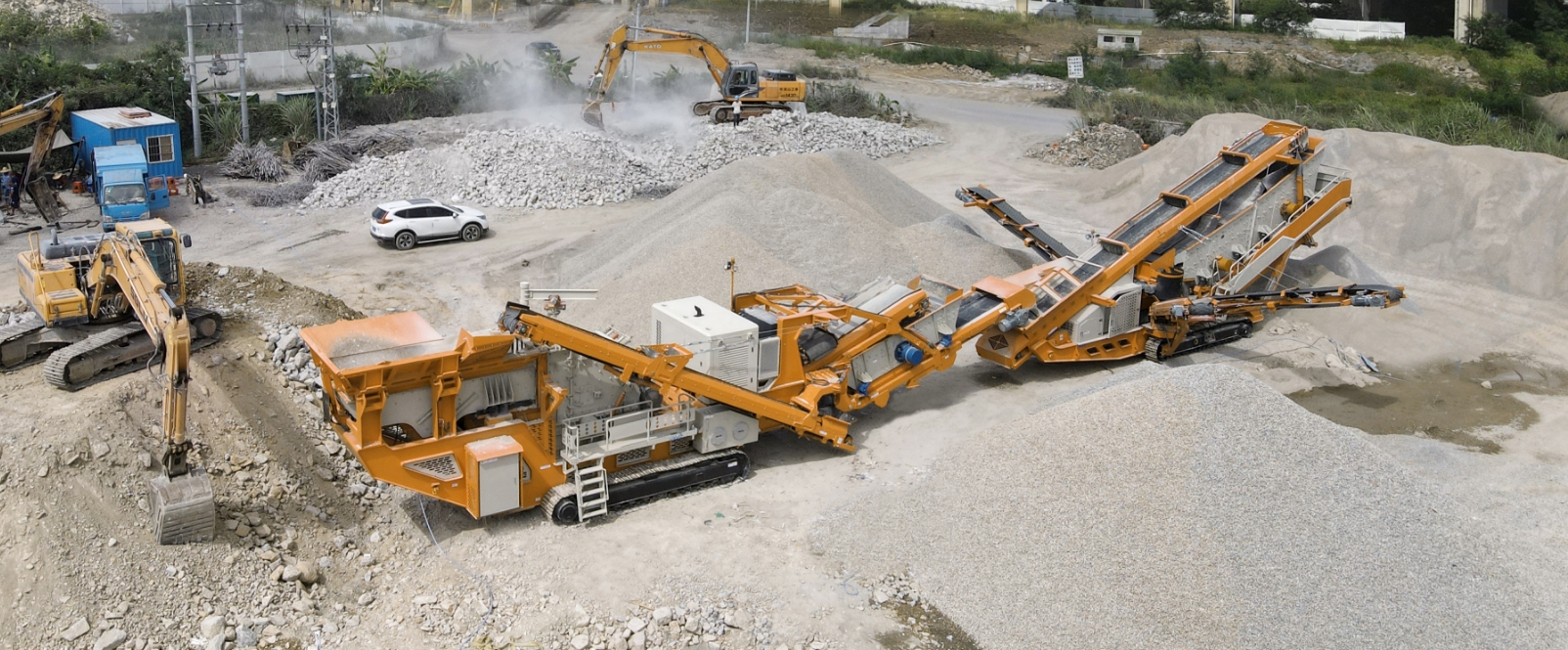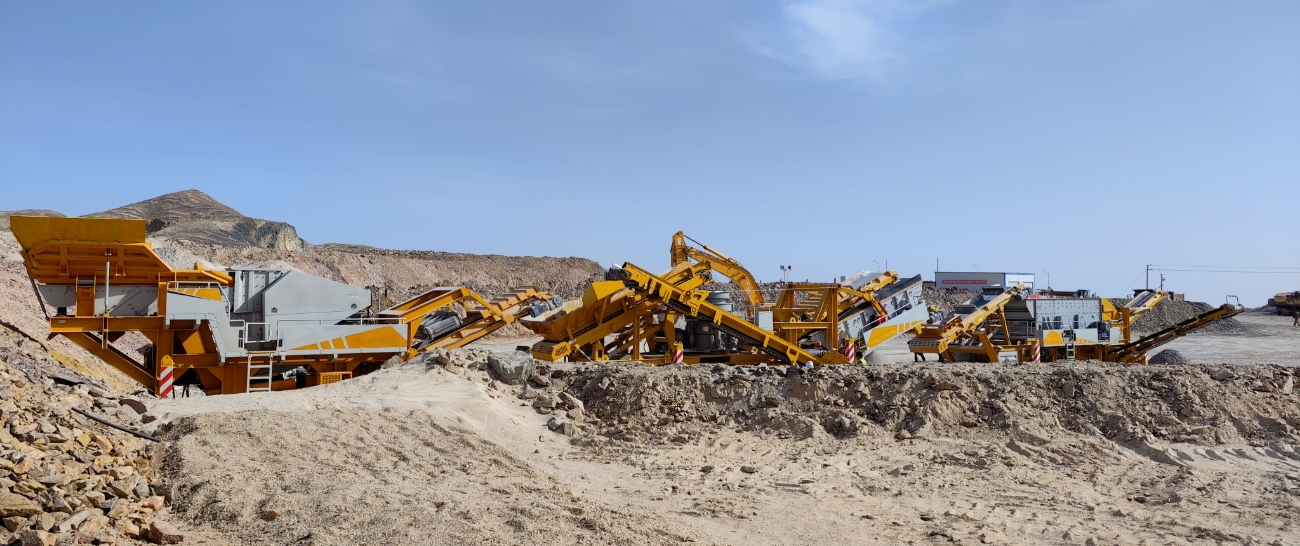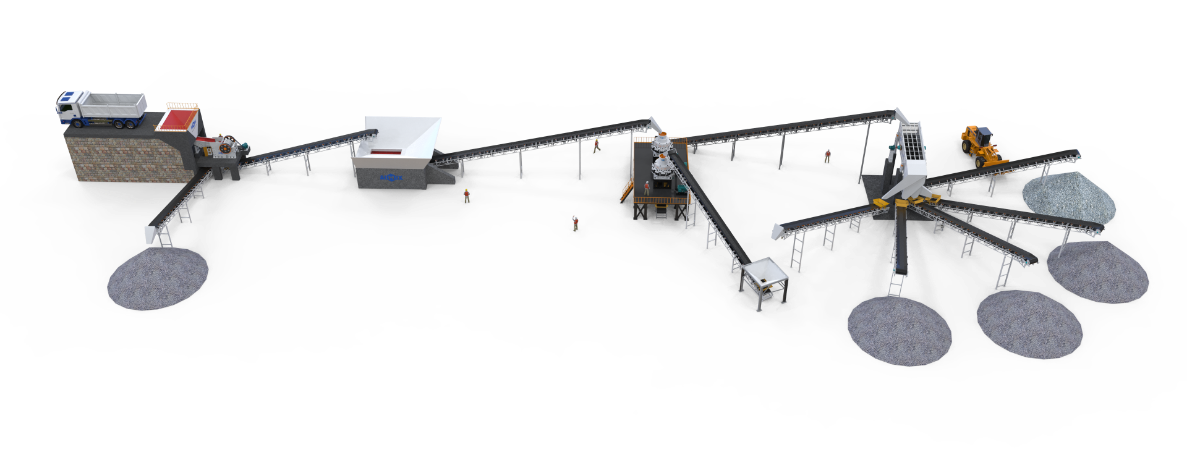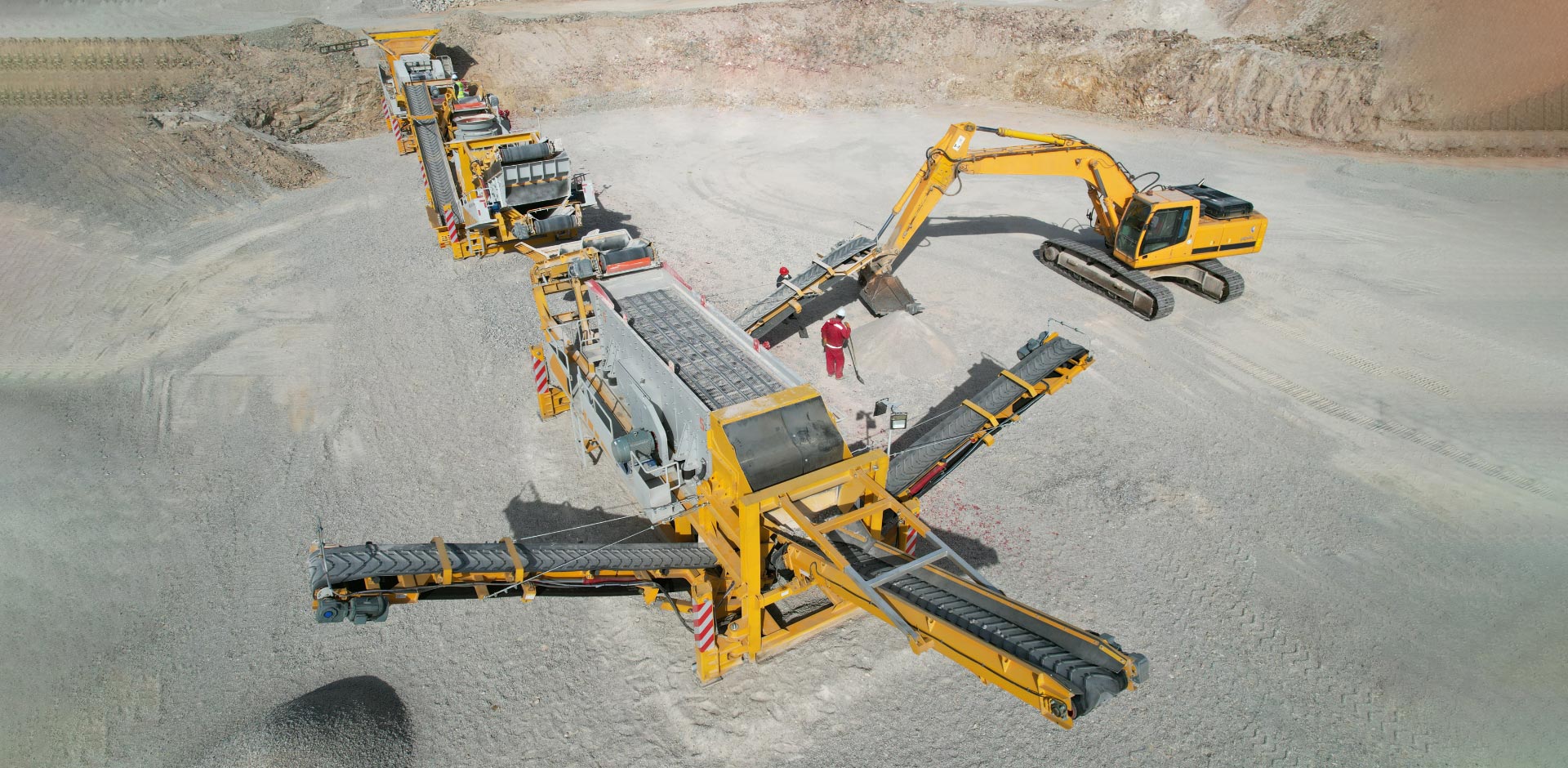Quarries are essential for the extraction of valuable resources from the earth. They provide the necessary raw materials for various industries, including construction, road building, and landscaping. However, the rocks and stones extracted from quarries are often too large or irregularly shaped to be directly used in these applications. This is where crushing plants play a vital role.
Understanding Crushing Plants
Crushing plants, also known as rock crushing plants or stone crushers, are specialized machines designed to reduce the size of large rocks and stones into smaller, more manageable pieces. These plants consist of several components, including a primary crusher, secondary crushers, screens, conveyors, and control systems. The primary crusher, often a jaw crusher or gyratory crusher, is responsible for reducing the initial raw material into a size suitable for further processing, and all the products mentioned above can be found in Aimix Group.

Efficient Extraction and Processing
The primary function of crushing plants in quarries is to facilitate the extraction and processing of rocks and stones. The primary crusher breaks down the rocks into smaller pieces, which are then conveyed to the secondary crushers for further reduction in size. Once the rocks are extracted from the quarry, they are transported to the stone crusher indonesia jakarta, where they undergo a series of crushing and screening processes. Screens are used to separate different sizes of crushed materials, ensuring that only the required sizes are sent for further processing.
Production of Valuable Aggregates
One of the primary outputs of crushing plants in quarries is aggregates. Aggregates are granular materials such as sand, gravel, and crushed stone that serve as key ingredients in the production of concrete, asphalt, and other construction materials. By breaking down large rocks into smaller sizes, crushing plant in Saudi Arabia quarry produce aggregates with specific particle sizes and shapes that meet the requirements of various construction projects. These aggregates contribute to the strength, durability, and aesthetic appeal of the final construction products.
Benefits of Crushing Plants in Quarries
The utilization of crushing plants in quarries offers several benefits for both quarry operators and the industries they serve. Firstly, crushing plants enable more efficient quarry operations by transforming irregularly shaped rocks into standardized aggregates. This not only improves productivity but also reduces transportation costs as smaller-sized materials can be easily transported.

Secondly, crushing plants enhance the quality and consistency of construction materials. By producing precisely controlled sizes of aggregates, these plants ensure that construction projects meet the required specifications, resulting in safer and more durable structures.
Furthermore, crushing plants promote sustainable practices in the quarrying industry. By recycling materials from demolished structures or reusing excavated rocks, the crushing plant for sale In bolivia minimize the need for virgin resources, reduce waste generation, and contribute to a more environmentally friendly approach to construction.

Crushing plants play an indispensable role in transforming rocks into valuable resources in quarries. Through their efficient extraction and processing capabilities, these plants provide a continuous supply of high-quality aggregates for various construction applications. The vitality of crushing plants lies in their ability to optimize quarry operations, improve material quality, and promote sustainable practices. As the demand for construction materials continues to grow, the importance of crushing plants in quarries remains paramount, ensuring a steady supply of resources and supporting the development of infrastructure around the world.
